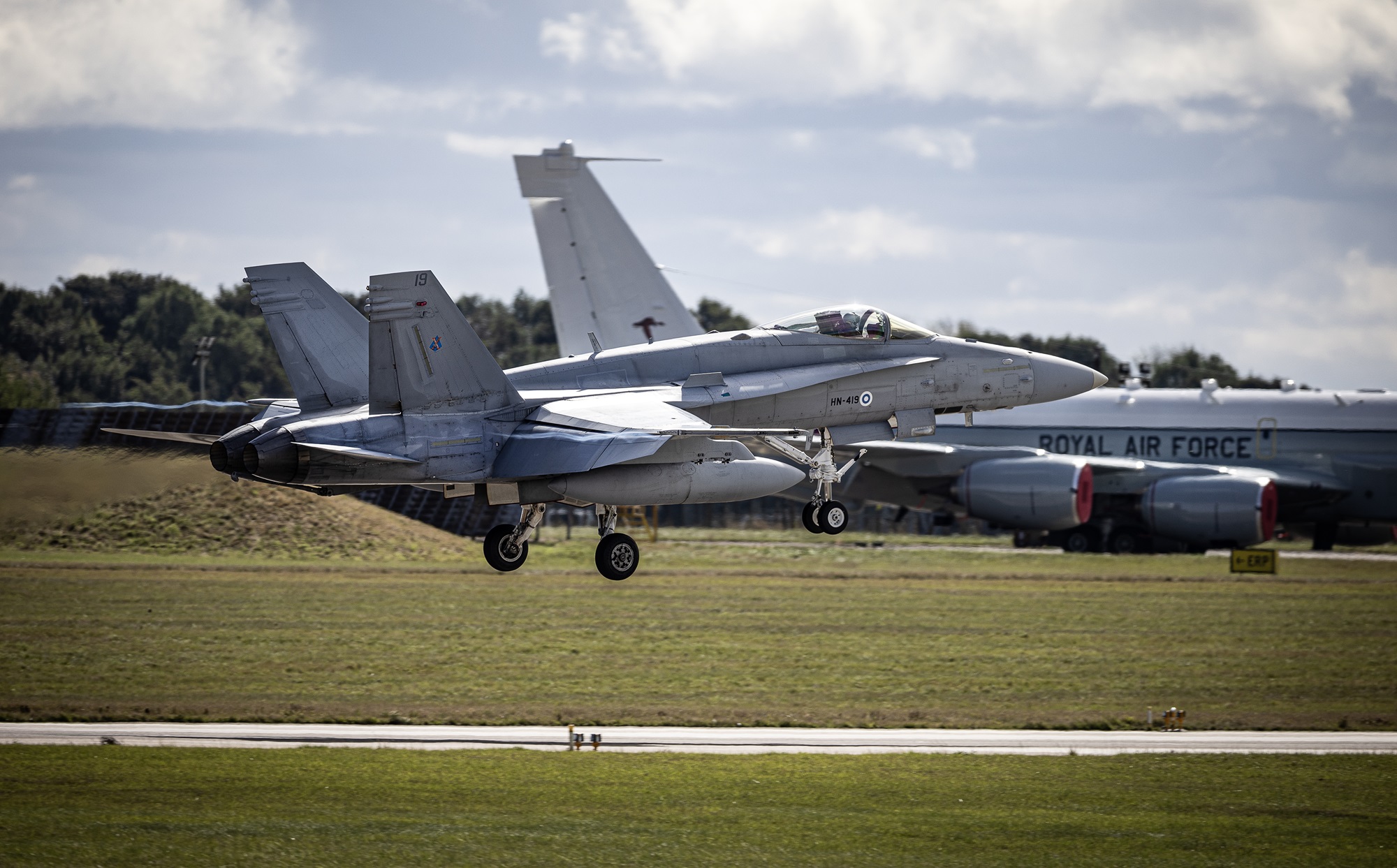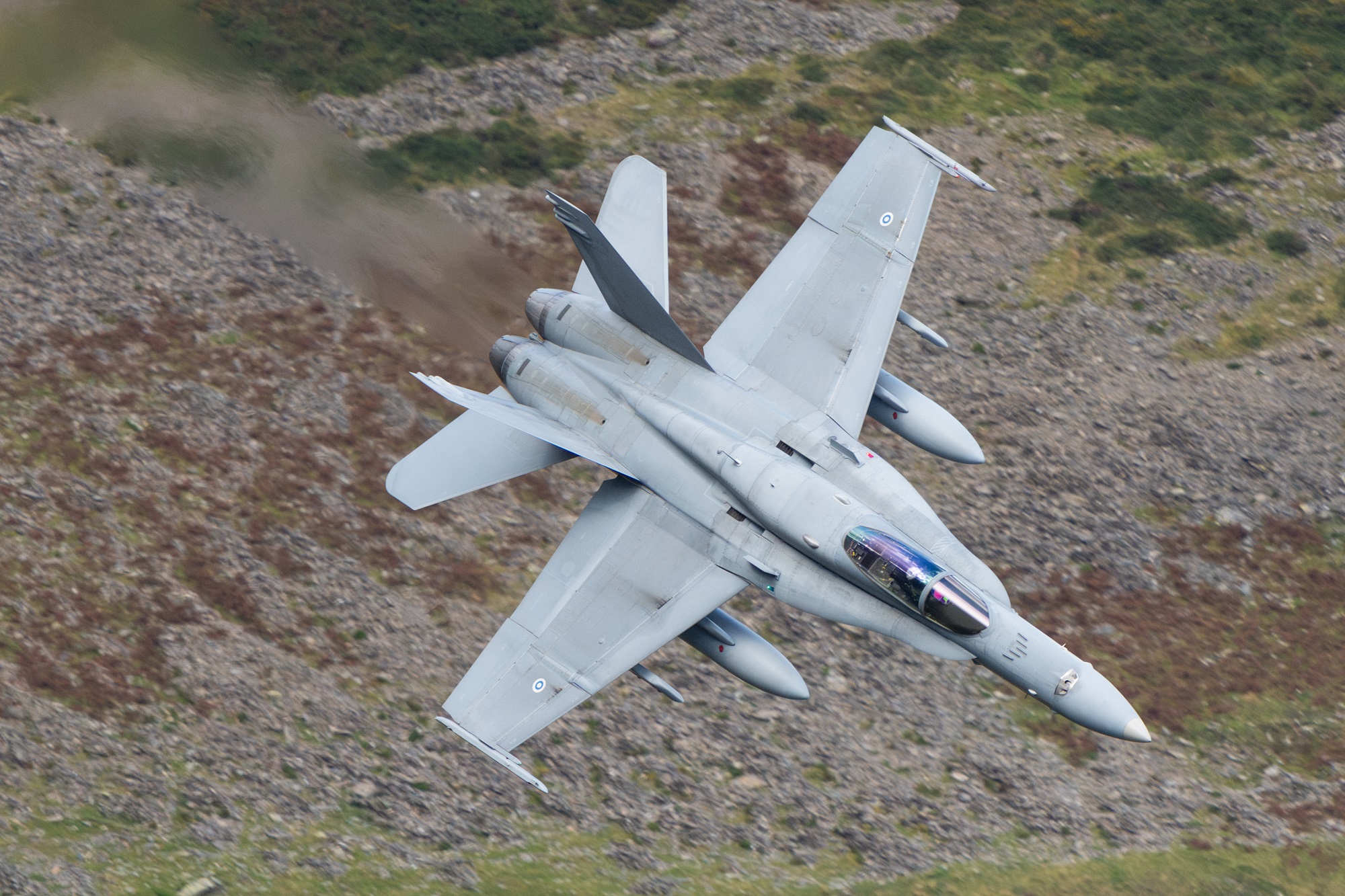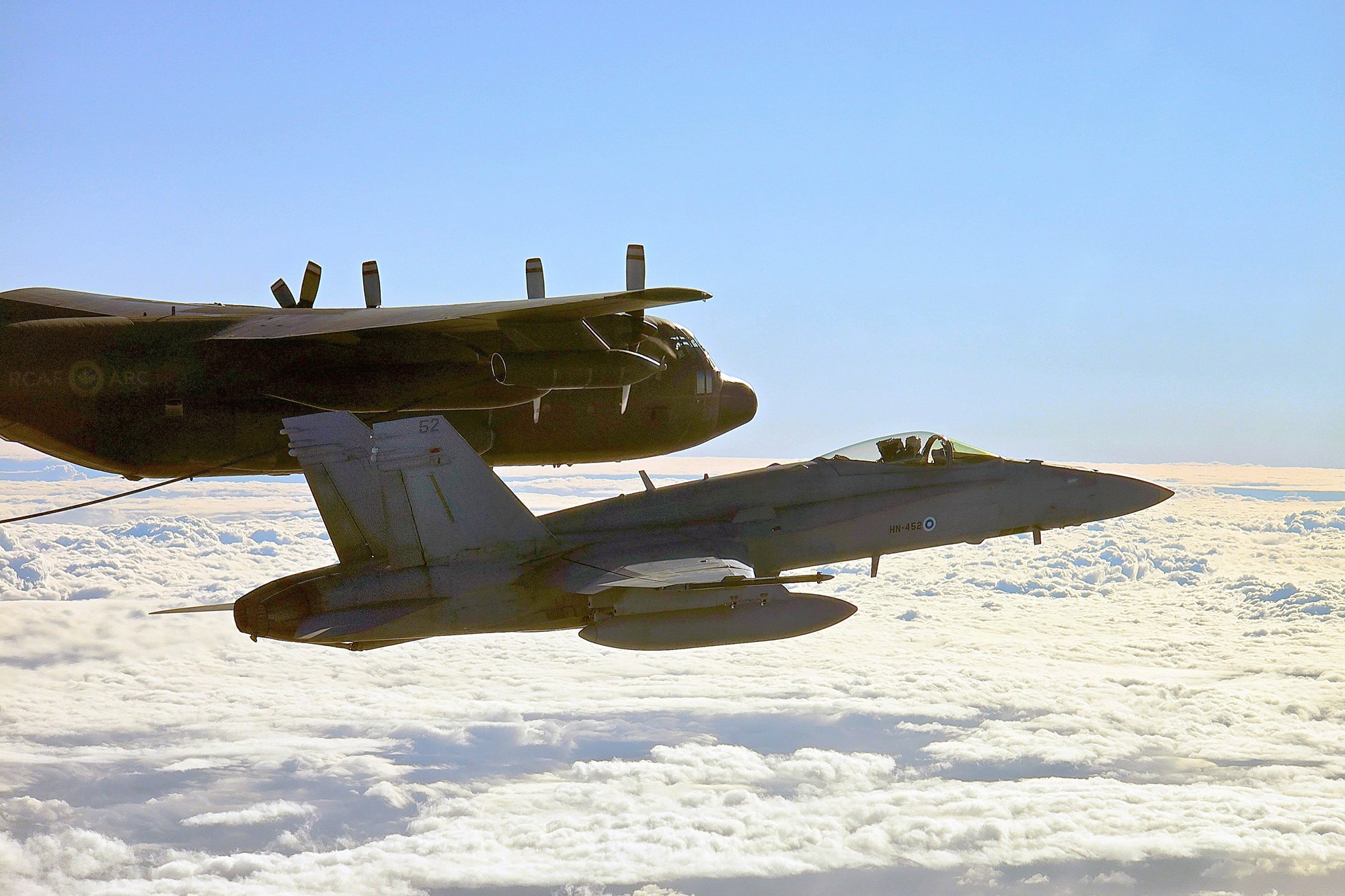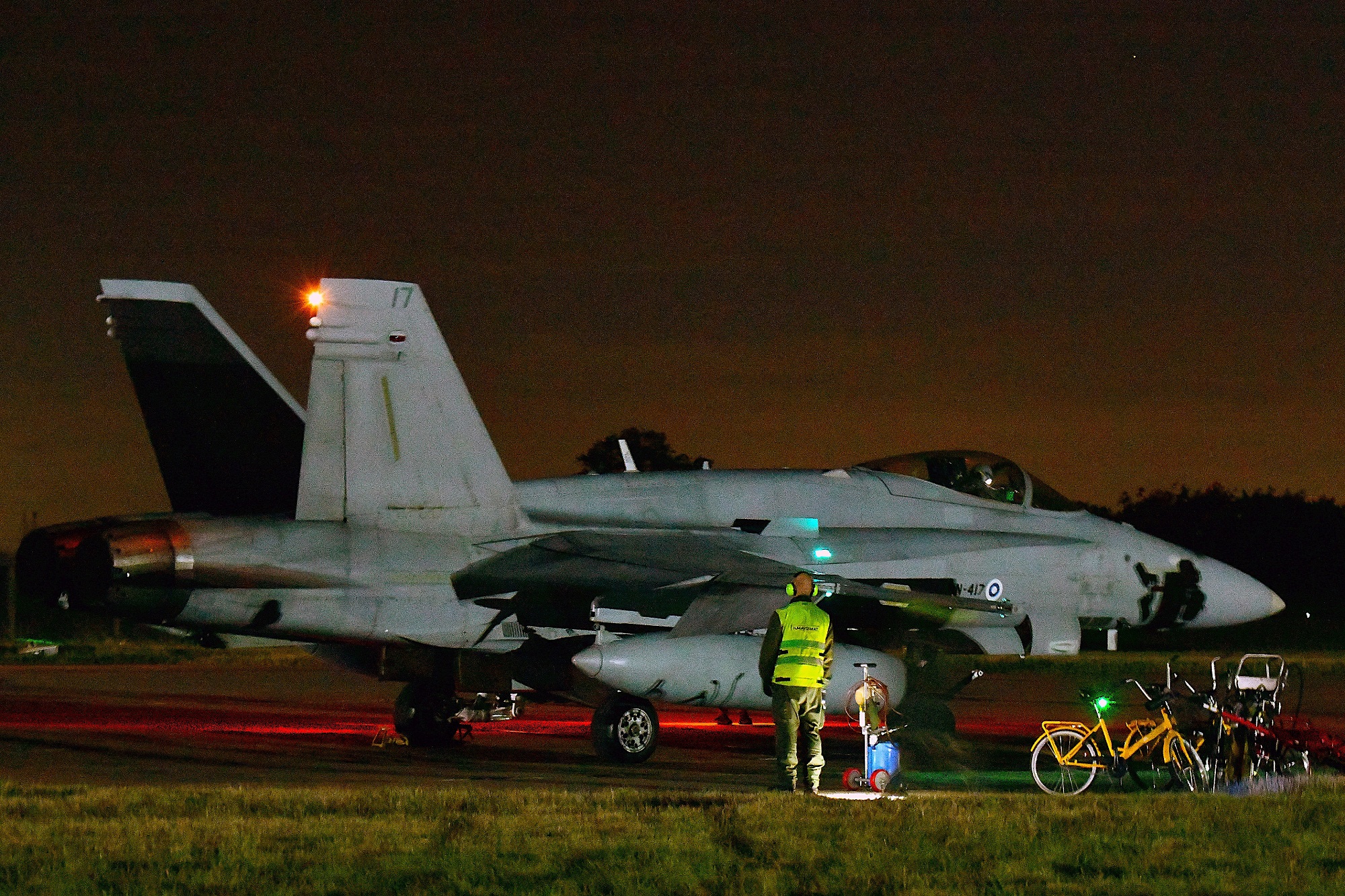Cobra Warrior provided experience in large-force multinational air operations
The Royal Air Force’s Cobra Warrior exercise ended on Friday 4 October. Some of the Finnish fighter jets will remain at RAF Waddington to take part in the air operations of the Royal Navy's Strike Warrior exercise, starting on 14 October 2024.

In total, the Cobra Warrior exercise involved more than 80 aircraft from the United Kingdom, Finland, Canada, Poland, Norway and the United States. Fighter types in the exercise included F/A-18 Hornet, F-35 Lightning II, Typhoon, F-15 and F-16. The Finnish and Canadian Hornets as well as the Polish F-16s operated from RAF Waddington, the British Typhoons from RAF Coningsby and RAF Lossiemouth, the British F-35Bs from RAF Marham, the U.S. and Norwegian F-35As as well as U.S. F-15s from RAF Lakenheath, and the U.S. F-16s from RAF Mildenhall. In addition to the fighter jets, there were air-to-air refueling tankers, surveillance aircraft, transport aircraft and helicopters taking part in the flight operations.
The exercise’s large-force multinational air operations were flown mainly over the North Sea. The largest waves included several dozens of fighter jets taking part in Defensive and Offensive Counter-Air operations (DCA & OCA). Planning the missions together with Allies was an important part of the exercise. In addition, there were smaller waves, consisting of tactical air combat training and low-altitude flying in the Low Flying Areas LFA17 in the English Lake District and LFA7 in Wales (“Mach loop”).

‒ The large-force air operations of the exercise were executed to a high standard. The challenging and realistic scenarios genuinely included all the elements of Multi-Domain Operations (MDO), including space, cyber and non-kinetic effects. The Finns participated in a wide range of mission types, with a focus on Defensive and Offensive Counter-Air operations, Integrated Air and Missile Defence (IAMD), and Air Interdiction Counter-Land operations. The Finnish pilots also played leadership roles in large-force air operations involving several dozen aircraft, providing valuable experience in cooperating with the Allies, says commander of the Finnish detachment, Lieutenant Colonel Lasse Louhela, Commander, Fighter Squadron 11, Lapland Air Wing.
‒ A key objective of the Cobra Warrior exercise was to integrate into Allied planning, mission execution, C2 and evaluation processes. This was successful, but lessons were identified in terms of standardising the planning and execution of air operations. Large multinational exercises such as Cobra Warrior highlight the importance of various supporting elements such as airlift capability, air-to-air refueling, as well as airborne intelligence, surveillance, target acquisition and reconnaissance (ISTAR) capabilities. In particular, the Finnish Air Force’s deployment capability was identified as an area for improvement, as deploying a fighter detachment abroad is a logistical challenge. At the moment, our deployment capability is quite dependent on the capabilities of Allies and commercial logistics companies, says Lt Col Louhela.
Close cooperation with Allies
One of the objectives of the Cobra Warrior exercise was to train together with Allied F-35 fighter jets. The U.S. and Norwegian F-35A jets participating in the exercise operated from RAF Lakenheath, and the British F-35Bs from RAF Marham.
‒ The integration of fourth and fifth generation fighter jets took place as part of the planning and execution of the large-force air operations. At the grassroots level, interaction was somewhat limited by the fact that the F-35 fighter jets operated from different bases than the Finnish detachment, but we nevertheless obtained a comprehensive set of observations about the integration of fifth generation capabilities into different mission types. For example, the Suppression of Enemy Air Defences (SEAD) capabilities were extensively involved in the air operations, says Lt Col Louhela.
In addition to the Finnish F/A-18 Hornet fighter jets, RAF Waddington hosted Canadian CF-188 Hornet jets and Polish F-16s. The Finns and Canadians were stationed next to each other at the base, partly in shared facilities.
‒ The cooperation with the Canadians was one of the best experiences of the exercise. Both countries fly the Hornet, so the operating culture is very similar. The support of the Canadian CC-130H Hercules tanker was particularly valuable, as it enabled the Finnish pilots to conduct air-to-air refueling training both day and night. The Polish F-16 detachment was stationed on the other side of the base, but cooperation with the Poles was also good, and during the exercise we managed to establish new cooperation relationships with both future F-35 partners, says Lt Col Louhela.

‒ The Royal Air Force has created a very high-quality operating environment for the large-force air operations of the Cobra Warrior exercise. Also the support functions were of a high quality. For example the White Cell and Exercise Control (EXCON) functions, responsible for the wargame organisation and scenarios, were implemented in collaboration with industry experts from Inzpire Ltd. The realistic scenarios of the exercise were based on NATO's defence plans and the latest experience from Ukraine, Lt Col Louhela emphasises.
Four F/A-18 Hornet fighter jets to remain at RAF Waddington
At the end of the Cobra Warrior exercise, two Finnish F/A-18 Hornet fighter jets returned home, while four aircraft will remain in the UK. Continuing to operate out of RAF Waddington, the Finnish jets will take part in the air operations of the Royal Navy’s Strike Warrior exercise on 14‒25 October 2024.
For the Finnish Air Force, the objective of the Strike Warrior exercise will be to train air-maritime force integration with the Royal Navy’s UK Carrier Strike Group. The air operations of the exercise will involve F-35B Lightning II fighter jets operating from the aircraft carrier HMS Prince of Wales. In addition, there will be fighter jets, maritime patrol aircraft and helicopters from the United Kingdom, Sweden, Norway, Germany, France, Canada and the United States taking part in the exercise.

Navy’s new fast jet squadron debuts at sea as 809 NAS join HMS Prince of Wales



